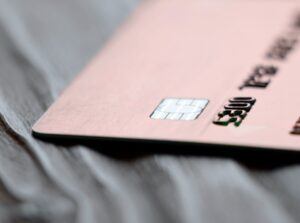Introduction to Crypto Wallets
Crypto wallets are essential tools for anyone looking to store, manage, and transact with cryptocurrencies. Setting up a crypto wallet is a crucial first step in your cryptocurrency journey. In this comprehensive guide, we’ll walk you through the different types of wallets available and provide step-by-step instructions on how to set up your own crypto wallet.
What is a Crypto Wallet?
A crypto wallet is a digital tool that allows you to store, send, and receive various cryptocurrencies. It securely holds your public and private keys, which are necessary for accessing and managing your crypto assets. Wallets come in different forms, each with their own unique features and benefits.
Why You Need a Crypto Wallet
To engage in any cryptocurrency transaction, whether it’s buying, selling, or trading, you need a crypto wallet. It serves as your personal interface to the blockchain network, allowing you to interact with your digital assets. Without a wallet, you won’t be able to store or use your cryptocurrencies.
Moreover, crypto wallets provide a layer of security for your funds. They protect your private keys, which are like the passwords to your crypto holdings. By properly setting up and securing your wallet, you can safeguard your investments from potential threats.
Types of Crypto Wallets
Before diving into the setup process, it’s important to understand the different types of crypto wallets available. Each type has its own advantages and trade-offs in terms of security, convenience, and accessibility.
Software Wallets
Software wallets are digital wallets that can be installed on your computer or mobile device. They are easy to use and offer quick access to your funds. Popular examples include MetaMask for Ethereum and Exodus for multiple cryptocurrencies.
Software wallets are user-friendly but can be vulnerable to hacking if your device is compromised. It’s crucial to choose a reputable wallet provider and enable additional security measures like two-factor authentication.
Hardware Wallets
Hardware wallets are physical devices that store your private keys offline, making them much less susceptible to online attacks. They often resemble USB drives and require you to manually confirm transactions. Leading hardware wallet brands include Ledger and Trezor.
Hardware wallets offer the highest level of security by keeping your keys isolated from the internet. They are ideal for long-term storage or holding large amounts of cryptocurrency. However, they come with a higher price tag compared to software wallets.
Hosted Wallets
Hosted wallets, also known as custodial wallets, are provided by third parties, usually cryptocurrency exchanges. When you create an account on an exchange like Coinbase or Binance, you’re automatically assigned a hosted wallet to store your funds.
Hosted wallets are convenient for beginners as they require minimal setup. However, you are entrusting your private keys to the exchange, which means you have less control over your funds. If the exchange gets hacked or goes out of business, your assets could be at risk.
Non-Custodial Wallets
Non-custodial wallets, also called self-custody wallets, give you complete control over your private keys. You are solely responsible for managing and securing your wallet. Examples include Electrum for Bitcoin and MyEtherWallet for Ethereum.
Non-custodial wallets offer greater freedom and privacy, but they also come with more responsibility. If you lose your private keys or seed phrase (a backup of your wallet), you risk losing access to your funds permanently. It’s crucial to follow best practices for wallet security, such as keeping backups in multiple secure locations.
Paper Wallets
Paper wallets are a form of cold storage where your public and private keys are printed on a piece of paper. They provide an offline, low-tech option for storing your cryptocurrencies. Paper wallets can be generated using online tools or through a process called “brain wallet,” where you memorize a seed phrase.
While paper wallets offer a high level of security, they are not without risks. The paper can be lost, damaged, or stolen, so it’s essential to keep multiple copies in secure locations. Paper wallets are best suited for long-term storage or gifting small amounts of cryptocurrency.
Step-by-Step Guide to Setting Up a Crypto Wallet
Now that you understand the different types of wallets, let’s walk through the process of setting up your own crypto wallet. We’ll cover the steps for each wallet type, so you can choose the one that best suits your needs.
Setting Up a Software Wallet
1. Research and compare different software wallet options based on your preferred cryptocurrency and security features.
2. Download the wallet software from the official website or a trusted app store.
3. Install the software on your computer or mobile device.
4. Create a new wallet by following the prompts and setting a strong password.
5. Securely back up your seed phrase or private key, as instructed by the wallet software.
6. Fund your wallet by transferring cryptocurrency from an exchange or another wallet using your public address.
Setting Up a Hardware Wallet
1. Purchase a hardware wallet from a reputable manufacturer, such as Ledger or Trezor.
2. Follow the manufacturer’s instructions to set up the device, which usually involves connecting it to your computer and installing the companion software.
3. Create a new wallet on the device by following the on-screen prompts.
4. Write down your seed phrase on the provided recovery sheet and store it in a secure location.
5. Transfer your cryptocurrencies from an exchange or another wallet to your hardware wallet using the public address.
Setting Up a Hosted Wallet
1. Choose a reputable cryptocurrency exchange that offers hosted wallets, such as Coinbase or Binance.
2. Create an account on the exchange by providing your email address, creating a strong password, and completing any necessary identity verification steps.
3. Once your account is set up, you’ll automatically have a hosted wallet associated with it.
4. Deposit funds into your account using a bank transfer, credit card, or other supported payment methods.
5. Use the exchange’s interface to buy, sell, or trade cryptocurrencies, which will be stored in your hosted wallet.
Setting Up a Non-Custodial Wallet
1. Research and compare different non-custodial wallet options based on your preferred cryptocurrency and security features.
2. Download the wallet software from the official website or a trusted app store.
3. Install the software on your computer or mobile device.
4. Create a new wallet by following the prompts and setting a strong password.
5. Securely back up your seed phrase or private key, as instructed by the wallet software. Store the backup in multiple secure locations, as losing it could result in permanent loss of funds.
6. Fund your wallet by transferring cryptocurrency from an exchange or another wallet using your public address.
Setting Up a Paper Wallet
1. Visit a reputable paper wallet generator website, such as WalletGenerator.net or BitAddress.org.
2. Follow the instructions to generate a new wallet address and private key. Some websites may require you to move your mouse or type random characters to create a unique key pair.
3. Print the paper wallet, which will include your public address and private key, on a secure printer. Ensure that the printer is not connected to the internet to prevent any potential security breaches.
4. Fold the printed wallet and store it in a secure location, such as a safe or safety deposit box.
5. To use the funds stored in your paper wallet, you’ll need to import the private key into a software wallet or use a tool like Blockchain.info’s Wallet Import Feature.
Securing Your Crypto Wallet
Regardless of the type of wallet you choose, it’s crucial to take steps to secure your funds. Here are some best practices to keep in mind:
Managing Private Keys
Your private keys are the gateway to your cryptocurrency funds. Never share your private keys with anyone, and always store them securely. Consider using a password manager to create and store strong, unique passwords for your wallets.
Backing Up Your Seed Phrase
Most wallets will provide you with a seed phrase during the setup process. This phrase, usually consisting of 12-24 words, acts as a backup for your wallet. Write down your seed phrase and store it in multiple secure locations, such as a safe or safety deposit box. In case your wallet is lost, stolen, or damaged, you can use the seed phrase to restore access to your funds.
Enabling 2-Step Verification
Whenever possible, enable two-factor authentication (2FA) for your wallets. This adds an extra layer of security by requiring a second form of verification, such as a code sent to your phone, in addition to your password. Many software and hosted wallets offer 2FA options, so be sure to take advantage of this feature.
Choosing the Right Crypto Wallet for You
With so many wallet options available, it can be overwhelming to choose the right one for your needs. Here are some factors to consider when making your decision:
Factors to Consider
– Security features: Look for wallets with strong security measures, such as 2FA, multi-signature support, and secure element chips (for hardware wallets).
– Ease of use: Consider your technical expertise and choose a wallet with an intuitive interface and clear instructions.
– Supported cryptocurrencies: Ensure that the wallet supports the specific cryptocurrencies you want to store and use.
– Reputation and track record: Research the wallet provider’s reputation, user reviews, and any history of security breaches or issues.
Comparing Wallet Features
| Wallet Type | Security | Ease of Use | Supported Cryptocurrencies |
|---|---|---|---|
| Software Wallet | Moderate | High | Varies by wallet |
| Hardware Wallet | High | Moderate | Varies by device |
| Hosted Wallet | Low to Moderate | High | Limited to exchange offerings |
| Non-Custodial Wallet | High | Moderate | Varies by wallet |
| Paper Wallet | High | Low | Limited to single cryptocurrency |
Understanding Crypto Wallet Transaction Fees
When sending or receiving cryptocurrencies, you may encounter transaction fees. These fees vary depending on the type of wallet and the blockchain network you’re using.
Types of Transaction Fees
– Network fees: These are the fees charged by the blockchain network to process your transaction. They are paid to the miners or validators who confirm transactions and add them to the blockchain.
– Wallet fees: Some wallets, particularly hosted wallets, may charge additional fees for transactions or account maintenance. These fees are set by the wallet provider and are separate from network fees.
How to Minimize Fees
To minimize transaction fees, consider the following tips:
– Choose a wallet with lower fees: Compare the fee structures of different wallets and select one that aligns with your needs and budget.
– Adjust transaction speed: Some wallets allow you to set a custom transaction fee. Opting for a slower transaction speed can result in lower fees, but may take longer to confirm.
– Batch transactions: If you need to make multiple transactions, consider combining them into a single transaction to reduce overall fees.
– Use a blockchain with lower fees: Some blockchain networks, such as Litecoin or Stellar, have lower transaction fees compared to Bitcoin or Ethereum. If your wallet supports multiple cryptocurrencies, consider using a network with lower fees when possible.
Conclusion
Setting up a crypto wallet is an essential step in your cryptocurrency journey. By understanding the different types of wallets, their features, and security best practices, you can make an informed decision on which wallet best suits your needs.
Remember to prioritize the security of your funds by choosing a reputable wallet provider, enabling additional security measures, and securely backing up your private keys or seed phrase.
With your crypto wallet set up and secured, you’re ready to start exploring the exciting world of cryptocurrencies. Whether you’re investing, trading, or using cryptocurrencies for everyday transactions, your wallet will be your trusted companion in managing your digital assets.
See also:






